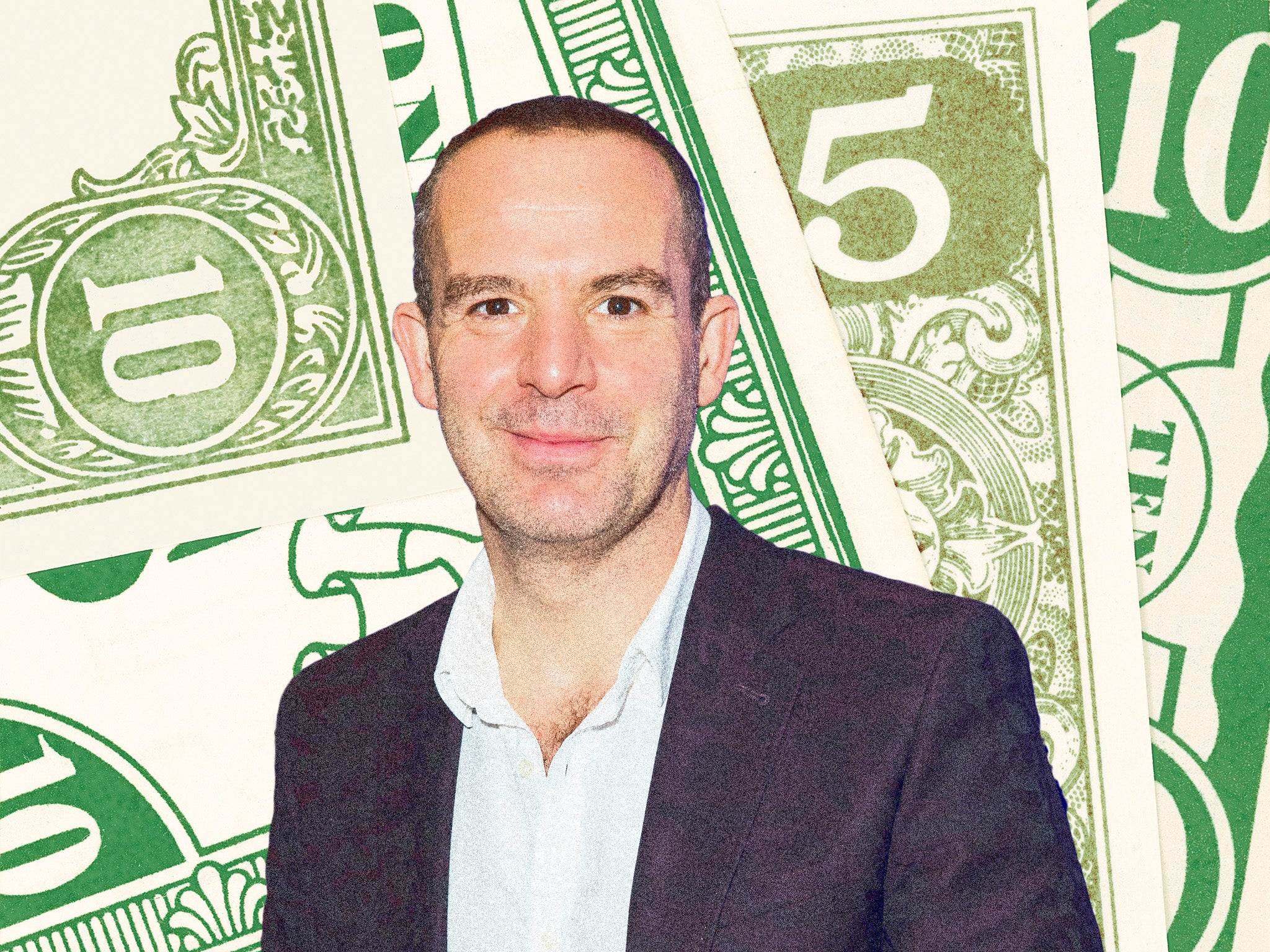Do Martin Lewis’s money-saving tips really work? We tested them to find out
Laura Hampson, Saman Javed and Kate Ng have investigated whether the consumer champion’s advice on everything from train tickets to groceries made a difference to their individual bank balances


Not all heroes wear capes; some are just very good at spreadsheets. As the cost of living crisis worsens, Martin Lewis has been hailed as a national hero for his advice on how to save cash.
The MoneySavingExpert founder has won an army of devotees, having spent months holding the government to account in a climate of soaring food prices and rising energy bills, and his MSE website is full of advice on how to make your money work harder.
Such is the service he’s providing that one person took his pointer that we all put £1 in a HSBC account and suggested: “I’d give £1 to a pot to get Martin Lewis a lil Christmas present. a nice candle or somethin. for being a great teacher.”
But how much of a difference can his tips really make? The consumer champion’s wisdom isn’t universally relevant – although he offers plenty of advice on mortgage deals, many millennials and Gen Z-ers don’t own a house. Some of the schemes he recommends have specific eligibility criteria, while some are very time-consuming.
And yet it’s undeniable that we’ll all need to change our spending behaviour in the coming months. So, in the name of frugality, we tested out some of the MSE tips over a three-week period to see how much money we could save or earn. Here’s what we learnt...
Actual free money
I’m a millennial woman who spends nearly half of my income on rent and whose visa status bars me from accessing public funds; the cost of living crisis has made me a ball of anxiety. Admittedly, I’m more privileged than some, as I benefit from a dual-income household and I have no children. But increasing costs mean I’m still looking for ways to save money. Which brings me to one of MSE’s most useful tips: you can make money quickly simply by switching banks. Lewis repeatedly extols the virtues of doing so, as most banks offer some sort of cash incentive to entice new customers to switch over to them. Most recently, he alerted readers to switch offers by Nationwide, First Direct and NatWest, all of whom were giving new customers up to £200.
I chose Nationwide, which is still offering a free £200 to switch to a new or existing Nationwide FlexDirect account. It was ridiculously easy – I applied for the switch and let Nationwide do the rest of the work. Once the balance of my previous accounts was moved over, the £200 was added to my new account within just two days of the switch. This was by far the most straightforward and beneficial of the tips I found on MSE – a free £200 just for changing banks? I’ll take that. Kate Ng

A chunk off the commute
Train tickets have always been one of the biggest expenses for those of us who commute during peak hours. And that got even pricier in March when fares increased by 3.8 per cent – the biggest hike in nine years. But since the pandemic, working patterns have changed – some workplaces, such as my own, now use a hybrid model, meaning employees only need to commute to the office two or three days a week. One helpful tip offered by the Money Saving Expert is to take advantage of “split ticketing” – that is when, instead of buying a single ticket to take you from your departure location to your destination, you buy multiple tickets for each part of the journey.
As someone who commutes into London from Essex, via just one 35-minute train, I was curious to see whether this could save me any money. To put it to the test, I bypassed my go-to Trainline app and opted to purchase my ticket from Splitmyfare.co.uk. I was pleasantly surprised to find that, this way, the tickets were £2 cheaper than I would usually pay. Helpfully, there is little to no hassle as you can buy them as E-tickets, meaning you won’t be lumbered with multiple paper tickets.
It may seem like a humble amount, but for someone who travels to the office three days a week, four times a month, it adds up to an annual saving of £300. The catch: I found that the cheaper tickets were only available when I had booked at least a week before I intended to travel. While the savings are worthwhile, this method does require more organisation and prior planning which can take some getting used to if you usually buy your tickets just before you travel. Saman Javed
Hacks for the weekly food shop
My husband and I have got our weekly grocery shop down to a tee – we order online from Tesco and it costs about £40 between us. But in recent months, as the cost of living crisis pushes supermarket prices up, it’s moved closer towards the £45 to £50 mark. Martin Lewis offers a whole range of tips to reduce the costs of a food shop, so I gave two a try. The first one was to shop for staples in the world foods aisle. According to MoneySavingExpert, shopping in the world foods aisle can see products “found cheaper gram for gram than the same product in different packaging”. The other: crouching down to see if we could find own-brand alternatives. Apparently, the cheapest, non-branded items can usually be found on the bottom shelf.

I went into the shop with the mentality that I would shop for what we regularly cook, and simply use his pointers for items that would naturally fall into each category. As we already have a lot of the staples in our cupboards, all I needed from the world foods aisle was garlic paste which came to £1.35 for 210g, compared to Sainsbury’s own brand garlic paste which was £1.45 for 90g. As for crouching down, we picked up the Sainsbury’s own brand gravy granules for 75p compared to the branded £2 jars. Other crouching-down bargains we saw but didn’t pick up included own-brand microwavable rice packets for 75p compared to £1.40 for a branded pouch, and Sainsbury’s own-brand crackers for £1 instead of a £1.70 branded packet.
However, despite these cost decreases we ended up spending more than we usually would on a shop, with the total price sitting at £60. Full disclaimer: this had nothing to do with Martin’s tips. It was simply down to the fact we shopped at a different supermarket than usual, and it was our first in-person shop in two years. For me, I find it harder to budget when shopping in person, and I’m more likely to buy extras that I normally wouldn’t, simply because I can see them on the shelves. But, overall, I found that Lewis’s grocery shopping tips did work. Buying staple items in the world foods aisle is a cheaper option, and looking at the bottom shelves led us to bargains we never normally would have seen. For me, however, I’m going to stick to my online shop. If it ain’t broke... Laura Hampson
Getting paid for market research
Some of the MSE recommendations require more work than others. The website lists more than 30 sites and apps that help users make a bit of extra cash or get gift vouchers in exchange for doing odd marketing jobs or selling things like stock photos, so I downloaded three apps recommended by MSE: BeMyEye, Field Agent, and StreetSpotr. They all pay users to carry out small market research tasks – anything from browsing pet stores to check if they carry particular pet food brands, to photographing shelves in pharmacies to see how products are being displayed, to checking prices and writing reviews of products.
Unfortunately, it turns out that many of these tasks are not within walking distance. One “mission” offers to pay £6.70 to check a display in Boots in Peckham, but the bus return journey from where I live would take up around half the fee. Is travelling almost an hour for just over £3 worth it, I wonder? Probably not. You need to be dedicated to make savings from these apps. They require you to check for tasks frequently and pick them before someone else nabs them; time and vigilance is needed. I made all of £11 during the past three weeks, which was a nice bit of pocket money, even if it was a bit of a faff. Kate Ng

Savings on your Christmas shopping
The most expensive time of the year is almost upon us. While one of the most enjoyable parts of the festive season is the opportunity to spoil your loved ones, most people will be trying to save money where possible this Christmas.
Lewis suggests a helpful tool called Price Runner, which I have been incorporating into my own shopping. It’s essentially a price comparison website and is extremely easy to use. You just type in the product you’re looking for and it will present you with a list of retailers selling the product, with the price at which it is listed. For example, a search of the Adidas Adicolor Classics Teddy Fleece shows that while it retails for £55 on the brand’s own website, End Clothing is currently selling the item for £39. I’d definitely recommend using this tool before making a purchase, as it lists more than two million items from over 6,000 shops across the UK. Saman Javed



Join our commenting forum
Join thought-provoking conversations, follow other Independent readers and see their replies
Comments